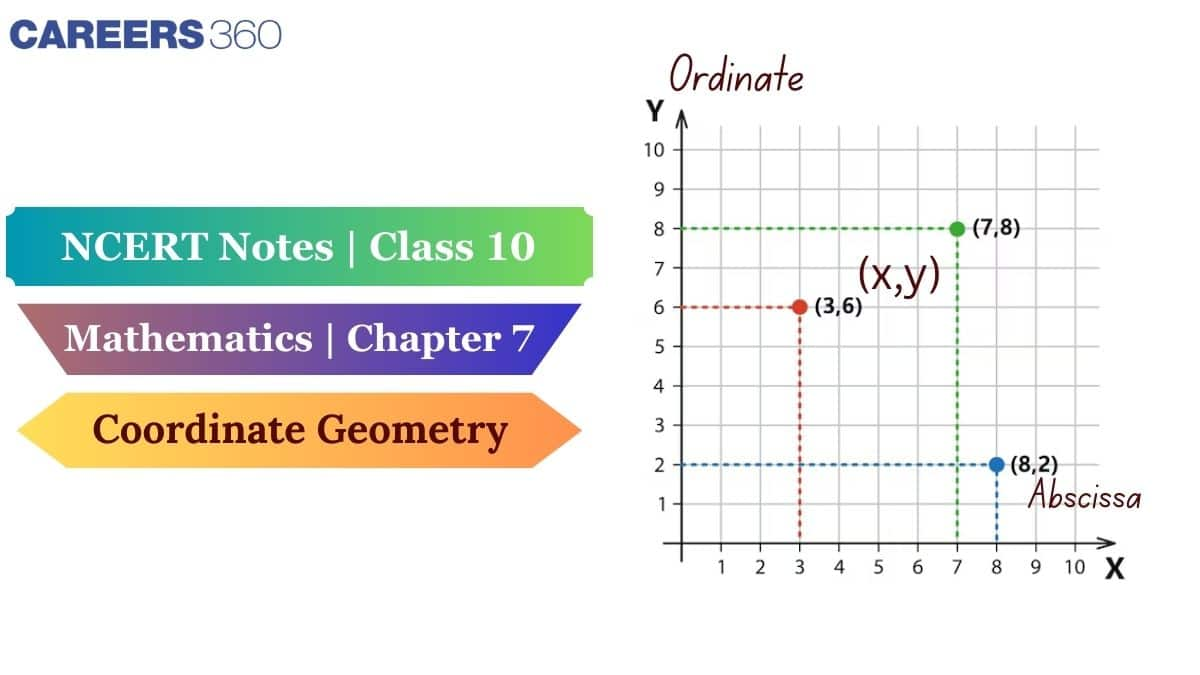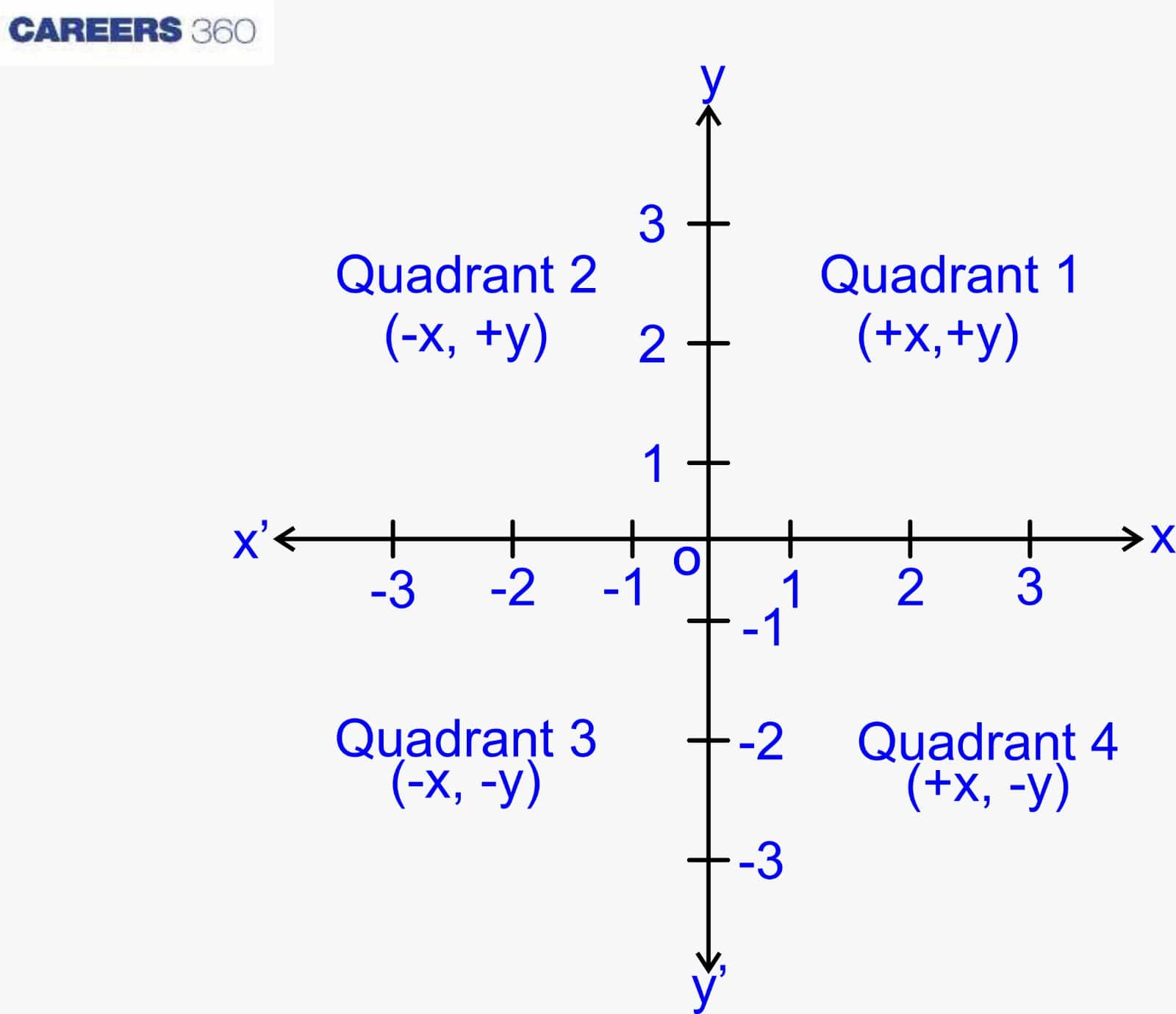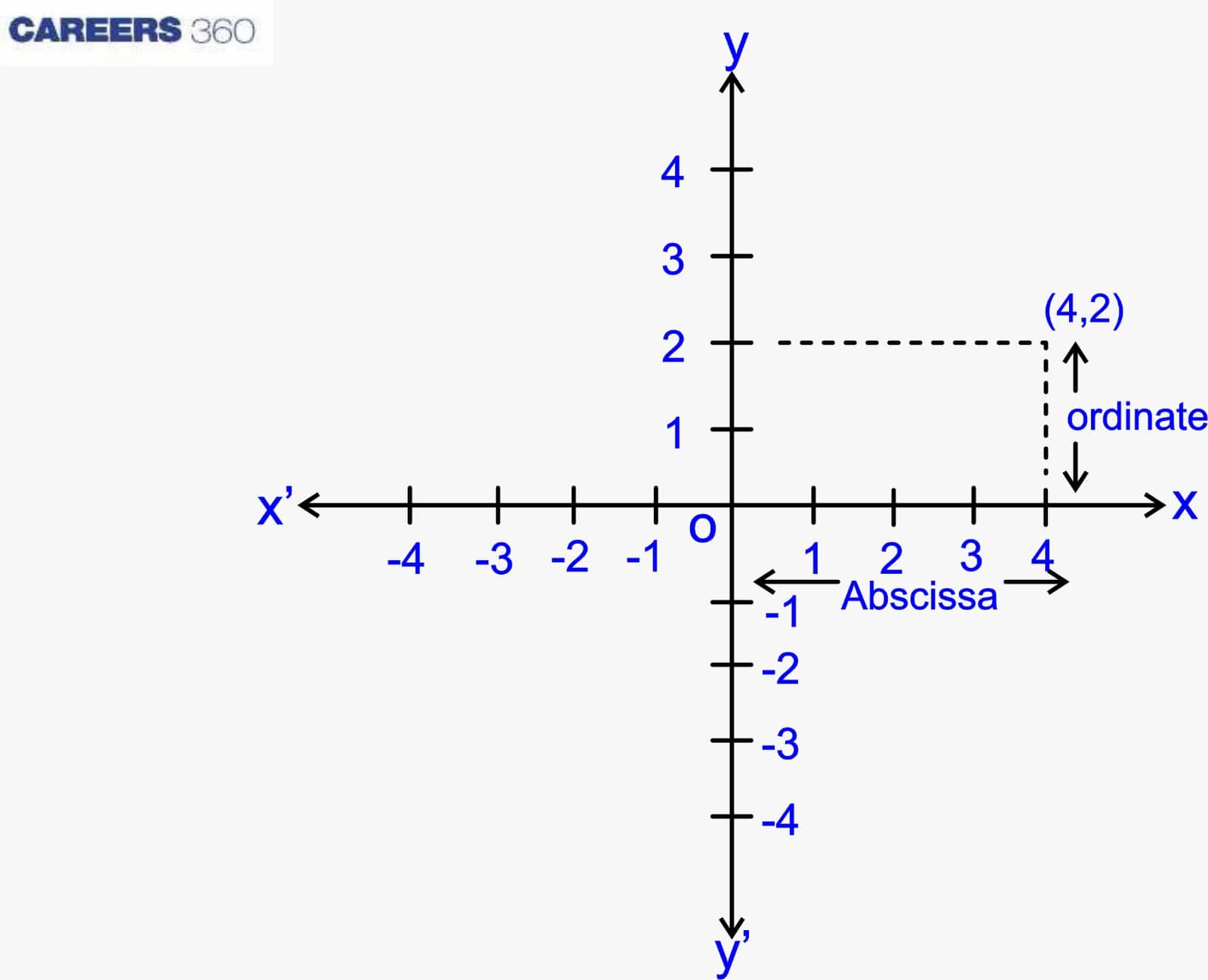Coordinate Geometry Class 10th Notes - Free NCERT Class 10 Maths Chapter 7 Notes - Download PDF
Coordinate Geometry teaches us that even the smallest point can help complete the big picture. It is the study of geometry using coordinate points. Coordinate geometry is used to determine the distance between two points. Coordinate geometry is also called analytic geometry or Cartesian geometry. It is a part of geometry. It describes the links between two points in graphs and algebra. Coordinate geometry is used in many areas, like navigation and mapping, including map projection, GPS, air traffic control, computer graphics, interior design, building construction, art and design, etc. It deals with the geometrical figures that have points on the x-axis and y-axis to determine the exact position in a 2-dimensional plane. These NCERT class 10 Maths chapter 7 notes turn difficult figures into easy answers. These NCERT notes are designed according to the latest syllabus of NCERT.
This Story also Contains
- Class 10 Coordinate Geometry Notes PDF – Download Free Study Material
- Coordinate Geometry Class 10 Notes
- How to Use the Coordinate Geometry Class 10 Notes Effectively?
- Coordinate Geometry Class 10 Notes: Previous Year Question and Answer
- NCERT Class 10 Maths Notes – Chapter-Wise Links

These notes include basic definitions of coordinate geometry, its subtopics like definition of points, formulae required to calculate the distance between two points, section formula, mid point theorem, what a coordinate is and a coordinate plane, equation of a line in the Cartesian plane, etc. CBSE Class 10 chapter Coordinate Geometry includes all the topics covered in these notes. These NCERT class 10th maths notes cover the complete syllabus of class 10, all the required definitions, formulas, and examples. Find everything in one place – NCERT Books, Solutions, Syllabus, and Exemplar Problems with Solutions – in this NCERT article.
Also, read,
Class 10 Coordinate Geometry Notes PDF – Download Free Study Material
Students who wish to access these NCERT Class 10 Maths Chapter 7 Notes can click on the link below to download the entire notes in PDF.
Coordinate Geometry Class 10 Notes
Careers360 has prepared these NCERT Class 10 Maths Chapter 7 Notes to make your revision smoother and faster.
Coordinate Geometry: Coordinate geometry is a branch of geometry that is used to determine the position of points using coordinates.
Coordinates: Coordinates are the set of values that are used to define the exact position of a point in the coordinate plane.
Coordinate Plane: It is a 2-dimensional plane that has two perpendicular axes called the x-axis and y-axis that intersect at a point. The point where both axes intersect is called the origin.
The 2-dimensional coordinate plane has four quadrants that are shown below:
1. Quadrant 1: (+x, +y)
2. Quadrant 2: (-x, +y)
3. Quadrant 3: (-x, -y)
4. Quadrant 4: (+x, -y)

Coordinates or Points On the Cartesian or Coordinate Plane
A pair of numbers is generally given in the terms of (x, y), and these numbers are called coordinates, and these coordinates define the position in the coordinate plane. In this plane, the distance from the point on the y-axis is called the abscissa or x-coordinate, and the distance of a point from the x-axis is called the y-coordinate or ordinate.
Example: Consider the coordinate (4, 2) as shown in Figure 4 is the abscissa, and 2 is the ordinate. 4 represents the distance from the y-axis, and 2 represents the distance of a point from the x-axis.

Distance Formula
The distance between the given points is calculated differently based on the coordinates and the position of the points.
The Distance Between Two Points on the Same Axis Coordinates
If the two points are on the same axis, x-axis or y-axis, then the difference will be determined by subtracting the value of the x-axis from the x-axis and the y-axis from the y-axis.
Example: Consider the figure shown below:

Distance between PQ = 3 - (-2) = 5
Distance between RS = 3 - (-1) = 4
Calculating Distance Between Two Points Using Pythagoras' Theorem
The distance between two points can be calculated using the Pythagorean theorem by extending the lines and creating a right-angle triangle.
Example: Consider points A(0, 3), B(4, 3), C(-4, -4), and D(-4, 0), determine the distance between C and D.
Given:
A(0, 3), B(4, 3), C(-4, -4), and D(-4, 0)
Extend the BA up to E and join C, D and E to make a right-angle triangle as shown below.

The distance between CD by using Pythagoras' Theorem is:
CD2 = BE2 + EC2
⇒ CD2 = (4 - (-4))2 + (0 - (-4))2
⇒ CD2 = 82 + 42
⇒ CD2 = 64 + 16
⇒ CD = $\sqrt{80}$ units
Distance Formula
If two points (x1, y1) and (x2, y2) then the distance can be calculated as:
$d= \sqrt{\left(x_2-x_1\right)^2+\left(y_2-y_1\right)^2}$
Section Formula
If a point P divides the line segment in the ratio of m : n, then the point P can be determined by the section formula. Suppose point P(x, y) divides the line segment A(x1, y1) and B(x2, y2) in m : n ratio, then to determine the P(x, y) the section formula is as follows:
$P(x, y)$ = $ (\frac{mx_2 + nx_1}{m + n}$, $ \frac{my_2 + ny_1}{m + n})$
Example: Find the coordinates of the point which divides the line segment joining the points (3, 1) and (7, 4) in the ratio 2 : 1 internally.
Given:
m : n = 2 : 1
x = $ (\frac{2(7) + 1(1)}{2 + 1})$, y = $ (\frac{2(4) + 1(-2)}{2 + 1})$
⇒ x = $ (\frac{14 + 1}{3})$, y = $ (\frac{8 - 2}{3})$
⇒ x = 5, y = 2
Finding The Ratio Given Points
If P(x, y) is the point that divides the line segments A(x1, y1) and B(x2, y2) internally, then the ratio of the line can be determined as follows:
Assume that the ratio is k : 1
Substitute the ratio in the section formula for any of the coordinates to get the value of k.
x = $ (\frac{kx_2+ x_1}{k + 1})$
or y = $ (\frac{ky_2+ y_1}{k + 1})$
Example: Find the ratio when point (– 3, 5) divides the line segment joining the points A(– 5, 9) and B(2, – 7)?
Given:
A(– 5, 9) and B(2, – 7)
P (– 3, 5)
$\frac mn$ : 1 = k : 1
P(– 3, 5) divide the line into k : 1 segment,
x = $ (\frac{kx_2+ x_1}{k + 1})$, y = $ (\frac{ky_2+ y_1}{k + 1})$
After substituting the values we get,
⇒ -3 = $ (\frac{2k+ (-5)}{k + 1})$
⇒ -3 = $ (\frac{2k - 5}{k + 1})$
⇒ -3k - 3 = 2k - 5
⇒ 5k = 2
⇒ k = $ (\frac{2}{5})$
Therefore, the required ratio is 2 : 5.
Midpoint
Midpoint is a point in a line that divides the line into two equal parts or in 1 : 1 ratio. If P is the point that divides the line A(x1, y1) and B(x2, y2).
Therefore,
$P(x, y)$ = $ (\frac{x_1 + x_2}{2}$, $ \frac{y_1 + y_2}{2})$
Example: What is the midpoint of line segment AB whose coordinates are A(-4, 4) and B(2, 6), respectively?
Given:
A(-4, 4) and B(2, 6)
$P(x, y)$ = $ (\frac{-4 + 2}{2}$, $ \frac{4 + 6}{2})$
$⇒P(x, y)$ = $ (\frac{2}{2}$, $ \frac{10}{2})$
$⇒P(x, y)$ = $(1, 5)$
Therefore, the midpoint is (1, 5).
Centroid of a Triangle
If P(x1, y1), Q(x2, y2), and R(x3, y3) are the vertices of a ΔPQR, then the coordinates of its centroid(A) are defined by,
$A(x, y)$ = $ (\frac{x_1 + x_2 + x_3}{3}$, $ \frac{y_1 + y_2 + y_3}{3})$
Example: Find the coordinates of the centroid of a triangle whose vertices are given as (-2, -4), (5, 1) and (9, -3)
Given:
(-2, -4), (5, 2) and (9, -3)
$A(x, y)$ = $ (\frac{x_1 + x_2 + x_3}{3}$, $ \frac{y_1 + y_2 + y_3}{3})$
After substituting the values we get,
$A(x, y)$ = $ (\frac{-2 + 5 + 9}{3}$, $ \frac{-4 + 1 + (-3)}{3})$
$⇒A(x, y)$ = $ (\frac{12}{3}$, $ \frac{-6)}{3})$
$⇒A(x, y)$ = $(4, -2)$
Therefore, the centroid of the triangle is (4, -2)
Area of a Triangle Using Coordinate Geometry
If P(x1, y1), Q(x2, y2), and R(x3, y3) are the vertices of a ΔPQR, then the area of ΔPQR can be defined as,
$Area$ = $ \frac{1}{2}$ $[x_1(y_2 - y_3) + x_2(y_3 - y_1) + x_3(y_1 - y_2)]$
Example: Find the area of the triangle ABC whose vertices are A(2, 3), B(5, 3) and C(4, 6).
Given:
A(2, 3), B(5, 3) and C(4, 6)
$Area$ = $ \frac{1}{2}$ $[x_1(y_2 - y_3) + x_2(y_3 - y_1) + x_3(y_1 - y_2)]$
After substituting the values, we get:
$Area$ = $ \frac{1}{2}$ $[2(3 - 6) + 5(6 - 3) + 4(3 - 3)]$
$⇒Area$ = $ \frac{1}{2}$ $[2(-3) + 5(3) + 4(0)]$
$⇒Area$ = $ \frac{1}{2}$ $[-6 + 15 + 0]$
$⇒Area$ = $ \frac{1}{2}\times[9]$
$⇒Area$ = $ \frac{9}{2}$
Therefore, the area of the triangle is $ \frac{9}{2}$ square units.
How to Use the Coordinate Geometry Class 10 Notes Effectively?
Sometimes these notes can feel like just pages to read, but if you use them smartly, they can make your chapter much easier. Coordinate Geometry needs practice, and notes help you revise quickly without confusion. These Class 10 Maths Chapter 7 notes can save you time and help you better understand formulas. Here are some more points on how these notes are important.
- Start by reading the introduction and understanding why the distance formula and the section formula are used in the real world.
- Try to solve a few basic questions after learning each formula so you don’t forget the steps.
- In higher classes, you will learn tougher forms of coordinates, so using the NCERT Class 10 Maths chapter 7 notes regularly gives you a strong base.
- Keep the NCERT Class 10 Maths chapter 7 notes with you while solving questions, so you can quickly revise formulas whenever you get stuck.
Coordinate Geometry Class 10 Notes: Previous Year Question and Answer
Given below are selected previous year question answers for NCERT Class 10 Maths Chapter 7 Coordinate Geometry, collected from various examinations.
Question 1:
Find the coordinates of the points where the graph $57x – 19y = 399$ cuts the coordinate axes.
Solution:
$57x-19y=399$
⇒ $\frac{57x}{399}-\frac{19y}{399} = 1$
⇒ $\frac{x}{7}-\frac{y}{21} = 1$ -------------(i)
Comparing it with the equation of a line:
$\frac{x}{a}+\frac{y}{b} = 1$
x-intercept = $a$ = 7
y-intercept = $b$ = –21
The line, $57x-19y=399$, cuts the x-axis at (7, 0) and the y-axis at (0, –21)
Hence, the correct answer is 'x-axis at (7, 0) and y-axis at (0, –21)'.
Question 2:
The graph of the equation $x=a(a \neq 0)$ is a_____.
Solution:
Given: $x=a(a \neq 0)$
A diagram that shows the change of one variable to one or more other variables, such as a collection of one or more points, lines, line segments, curves, or regions.
The value of $x$ = The value of $a$ = 1, 2, 3, and so on to infinity.
The value of $y$ = constant (assume $y=4$)
As a result, the graph these points create will be a straight line parallel to the y-axis.
Hence, the correct answer is a line parallel to the y-axis.
Question 3:
The area of triangle formed by the straight line $3x + 2y = 6$ and the co-ordinate axes is:
Solution:
The area of a triangle formed by a line and the coordinate axes $=\frac{1}{2} \times \text{base} \times \text{height}$
The line $3x + 2y = 6$
At $y = 0⇒x = \frac{6}{3} = 2$
At $x = 0⇒y = \frac{6}{2} = 3$
So, the base and the height of the triangle are $2$ units and $3$ units, respectively.
$\text{Area of the triangle formed} = \frac{1}{2} \times 2 \times 3 = 3$
Hence, the correct answer is 3 square units.
NCERT Class 10 Maths Notes – Chapter-Wise Links
Access all NCERT Class 10 Maths notes from one place using the links below.
NCERT Exemplar Solutions for Class 10
Students must check the NCERT Exemplar solutions for class 10 of Mathematics and Science Subjects.
NCERT Solutions for Class 10
Students must check the NCERT solutions for class 10 of Mathematics and Science Subjects.
NCERT Books and Syllabus
As students step into a new class, they must first explore the latest syllabus to identify the chapters included. Below are the links to the most recent syllabus and essential reference books
Frequently Asked Questions (FAQs)
Coordinate Geometry, also known as Analytic Geometry, is the branch of mathematics that uses algebraic methods to represent and solve geometric problems on a coordinate plane. [x1(y2−y3)+x2(y3−y1)+x3(y1−y2)]
Yes, with a minor sign change, the formula can also determine the coordinates of a point dividing a line externally in a given ratio.
Internal division locates a point between two points, while external division locates a point outside the line segment extended.
Many educational platforms, such as Careers360, offer free downloadable PDFs of NCERT Coordinate Geometry Class 10 Notes. Students can find the free downloadable PDF in this article itself.
The plane is divided into four quadrants:
Quadrant I: x>0, y>0
Quadrant II: x<0, y>0
Quadrant III: x<0, y<0
Quadrant IV: x>0, y<0
Popular Questions
Courses After 12th
Applications for Admissions are open.
As per latest syllabus. Physics formulas, equations, & laws of class 11 & 12th chapters
JEE Main Important Chemistry formulas
Get nowAs per latest syllabus. Chemistry formulas, equations, & laws of class 11 & 12th chapters
JEE Main high scoring chapters and topics
Get nowAs per latest 2024 syllabus. Study 40% syllabus and score upto 100% marks in JEE
JEE Main Important Mathematics Formulas
Get nowAs per latest syllabus. Maths formulas, equations, & theorems of class 11 & 12th chapters
